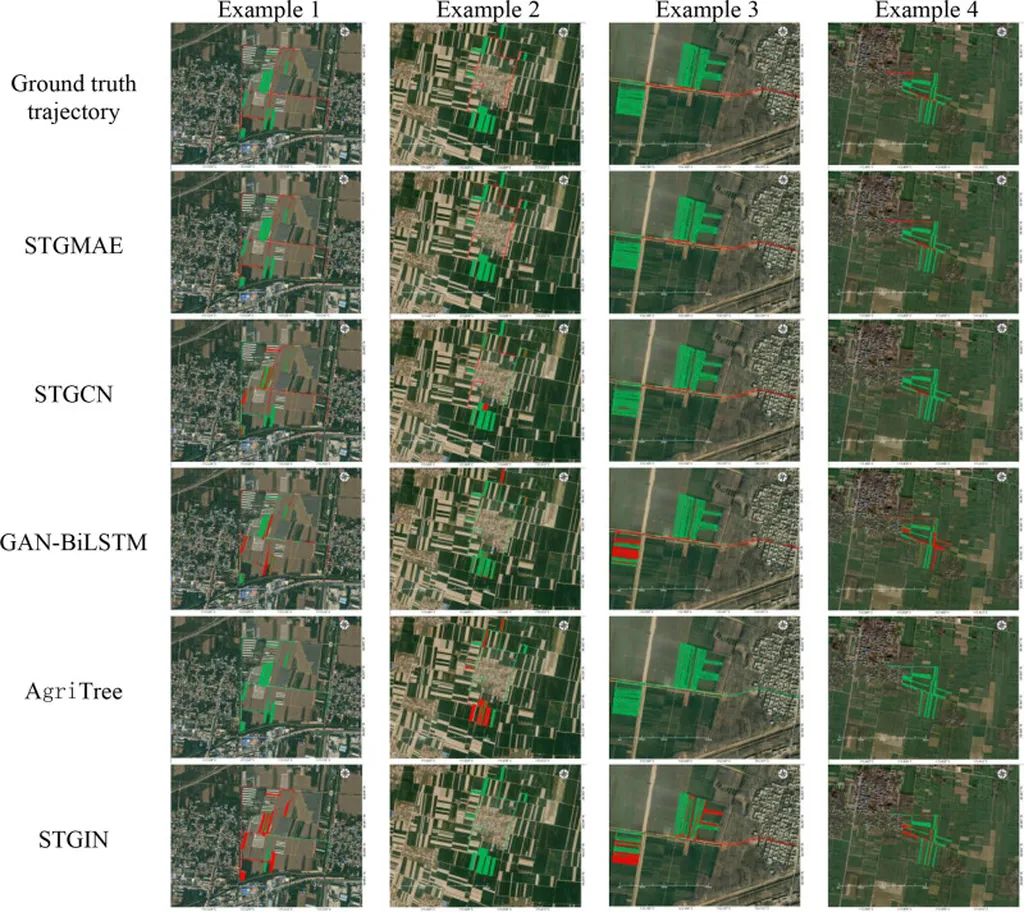In the ever-evolving landscape of precision agriculture, a groundbreaking study has emerged, promising to revolutionize how we identify and understand the operation modes of agricultural machinery. Published in the esteemed journal *Artificial Intelligence in Agriculture*, the research introduces STGMAE, a novel model designed to harness the power of spatiotemporal features in trajectory data.
The study, led by Tailai Chen from the College of Information and Electrical Engineering at China Agricultural University, addresses a critical gap in current methodologies. “Most previous studies focus narrowly on single-perspective feature extraction, neglecting the comprehensive spatiotemporal information in trajectory data,” Chen explains. This oversight has limited the accuracy and effectiveness of identifying operation modes, a task pivotal for optimizing agricultural practices.
STGMAE stands out with its multilevel feature extraction method (MFE), which meticulously extracts motion and statistical features. The model employs a motion feature extractor and a sliding time window to capture these features initially. It then uses a spectral feature module (SFM) to enhance the representation of trajectory data by capturing spectral information. This innovative approach ensures that the rich spatiotemporal data is fully utilized, leading to more accurate and reliable identifications.
One of the most significant advancements in STGMAE is its pre-training network, which combines serial encoding and parallel decoding. This design prevents information loss in long-range encoding, a common challenge in trajectory data analysis. The data is first modeled globally interactively via a multiscale wavelet projector (WMP), followed by an adaptive graph isomorphic neural network (AGIN). Within AGIN, a semi-adaptive masked Laplace operator (SAMLO) captures the correlation information between trajectory points, and a passing mechanism addresses both homogeneous and heterogeneous relationships.
The practical implications of this research are profound. Accurate identification of operation modes can lead to significant improvements in agricultural efficiency and productivity. For instance, understanding the precise movements of harvesting machinery can optimize fuel usage, reduce operational costs, and minimize environmental impact. The model’s high accuracy rates—95.50% for paddy, 95.32% for corn, and 95.36% for wheat harvesting trajectories—demonstrate its potential to become a standard tool in precision agriculture.
Chen’s work not only advances the field of agricultural technology but also sets a new benchmark for data-driven decision-making in farming. As the agriculture sector continues to embrace digital transformation, tools like STGMAE will play a crucial role in shaping the future of sustainable and efficient farming practices.
The research, published in *Artificial Intelligence in Agriculture* and led by Tailai Chen from the College of Information and Electrical Engineering at China Agricultural University, underscores the importance of leveraging advanced technologies to address real-world challenges in agriculture. With its innovative approach and impressive results, STGMAE is poised to make a lasting impact on the industry, driving progress and innovation in precision agriculture.

